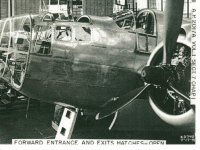aleatorylamp
Charter Member
Hello again,
Of course, it is quite obvious what is happening here:
The two blower speeds, high and low, are not available in CFS1.
So if I set it for Sea-level, I don´t get enough power at altitude,
and if I set it for altitude, I get sea-level top performance way too high.
So I suppose there is no other way around it than to either accept a
too-high sea-level performance, or a too low sea-level power with
correct performance, which is whay the MitchellC .air file does...
Update:
Well... I finally figured it out how to fiddle around with Induced Drag/Zero Lift Drag to get a little more speed higher up, adjusting torque/friction accordingly.
For the moment, I´m getting with 44 Mpsi::
- Sea-Level: 1596 Hp, and 290 mph
- 15000 ft: 1825 Hp, and 319 mph
Performancewise it ties in quite well, but Powerwise there´s quite a great 229 Hp difference, which is most probably unaviodable, given the single-speed blower available.
Cheers,
Aleatorylamp
Of course, it is quite obvious what is happening here:
The two blower speeds, high and low, are not available in CFS1.
So if I set it for Sea-level, I don´t get enough power at altitude,
and if I set it for altitude, I get sea-level top performance way too high.
So I suppose there is no other way around it than to either accept a
too-high sea-level performance, or a too low sea-level power with
correct performance, which is whay the MitchellC .air file does...
Update:
Well... I finally figured it out how to fiddle around with Induced Drag/Zero Lift Drag to get a little more speed higher up, adjusting torque/friction accordingly.
For the moment, I´m getting with 44 Mpsi::
- Sea-Level: 1596 Hp, and 290 mph
- 15000 ft: 1825 Hp, and 319 mph
Performancewise it ties in quite well, but Powerwise there´s quite a great 229 Hp difference, which is most probably unaviodable, given the single-speed blower available.
Cheers,
Aleatorylamp
Last edited:




